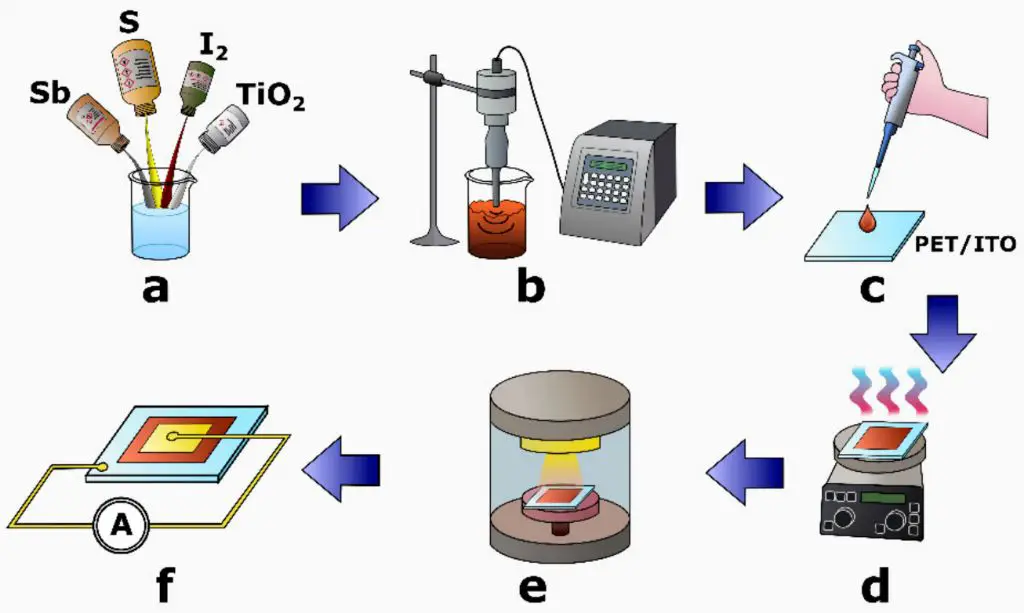What Is A Pyro Sensor For Temperature?
Pyroelectric sensors are a type of passive infrared sensor that detect levels of infrared radiation. They are made from pyroelectric materials, which generate a temporary voltage when exposed to heat energy and temperature changes (source: https://www.sciencedirect.com/topics/engineering/pyroelectric-sensor).
Pyroelectric sensors allow for contactless temperature measurement and motion detection. They function by absorbing incoming infrared radiation, which causes the internal temperature of the sensor to change. This temperature change alters the polarization levels of the pyroelectric material and generates an electrical charge that is measured as the sensor output (source: https://www.newport.com/n/pyroelectric-physics).
Some applications of pyroelectric sensors include intruder alarms, gas analyzers, thermometers, radiometers, and laser energy detectors. Their ability to detect temperature changes and motion from a distance makes them useful for remote sensing and measurement.
History and Development
Pyroelectricity was first observed in ancient Greece over 2,300 years ago by Theophrastus, who noted that the mineral called “lyngourion” attracted bits of straw and wood when heated. It is now known that lyngourion was likely tourmaline, a pyroelectric crystal.
In the 17th and 18th centuries, several important contributors advanced the understanding of pyroelectricity. Robert Boyle and Louis Lemery discovered that heating and cooling tourmaline affected its electrical properties. Franz Aepinus showed that alternating heating and cooling created an electrical current. Joseph Priestley also observed electrical effects in tourmaline brought on by temperature changes.
The term “pyroelectricity” was coined in 1824 by David Brewster, derived from the Greek words for fire and electricity. He performed systematic experiments on tourmaline and other crystals, establishing pyroelectricity as a unique phenomenon separate from piezoelectricity.
Significant progress was made in the late 19th and early 20th centuries by Pierre Curie, Woldemar Voigt, and others. Curie studied pyroelectric coefficient measurements, while Voigt developed fundamental theoretical models of the pyroelectric effect.
In the 1950s, the development of infrared sensing technologies drove further research into pyroelectric materials. Key innovations in pyroelectric sensor design and applications emerged from companies such as Philips and Honeywell. Today pyroelectricity enables a wide range of thermal sensing and imaging devices.
Operating Principles
Pyroelectric sensors operate based on the pyroelectric effect, which describes how certain materials generate an electric charge in response to changes in temperature (Source). Pyroelectric materials, such as crystals of tourmaline, have a unique molecular structure that causes them to become electrically polarized when heated or cooled. This polarization changes the positions of positive and negative charges inside the material, leading to voltage generation.
Specifically, pyroelectric sensors utilize the piezoelectric effect. When the sensor’s pyroelectric material undergoes a temperature change, it expands or contracts slightly. This mechanical stress causes a change in the electric dipole moment of the molecular structure. The changing dipole moment results in a temporary voltage across the material that is proportional to the rate of temperature change. This voltage can be measured and correlated to the amount of infrared radiation absorbed.
In summary, pyroelectric sensors convert temperature fluctuations into measurable voltage signals through the piezoelectric effect. The sensor generates a voltage spike when exposed to a rapid increase or decrease in temperature from a heat source. This allows the sensor to detect temperature changes induced by incident infrared radiation.
Types of Pyroelectric Materials
Pyroelectric materials are crystalline solids that have a spontaneous electric polarization that changes temperature. The most common pyroelectric materials used in sensors include:
Triglycine Sulfate (TGS)
TGS is one of the most commonly used pyroelectric materials due to its strong pyroelectric properties and stability at room temperature [1]. It has a high voltage sensitivity and low dielectric loss. However, it has low thermal stability and depolarizes above 49°C.
Lithium Tantalate (LiTaO3)
LiTaO3 has a very high Curie temperature of about 600°C, making it thermally stable compared to other materials [2]. It also has low dielectric losses. The drawbacks are lower voltage sensitivity and higher cost compared to TGS.
Lead Zirconate Titanate (PZT)
PZT exhibits strong pyroelectric properties due to the contribution from multiple ions. It has a high voltage sensitivity and low dielectric loss. However, it depolarizes at high temperatures above 200°C. The composition can be optimized to improve properties.
Polyvinylidene Fluoride (PVDF)

PVDF is a polymer that can be made into thin pyroelectric films using various techniques [3]. It has high voltage sensitivity but also high dielectric losses. The operating temperature range is limited from -40°C to 80°C.
Sensor Design and Configuration
There are several ways to optimize the performance of pyroelectric sensors through careful design and configuration. Packaging and noise reduction are two key considerations.
According to research from the International Conference on Electrical and Computer Engineering 2015 (Bui et al., 2015), optimizing parameters like thickness, area, thermal conductivity, heat capacity, and more can improve sensor performance. Bui et al. developed an algorithm to determine optimal design parameters for maximum voltage responsivity.
Proper packaging is also important. Pyroelectric sensors can be packaged in standard TO-5 or TO-8 transistor cases, but vacuum-sealed probes or chips allow for better thermal isolation and sensitivity (Sharma et al., 2020). Silicon membranes, cavities, and thin-film structures help reduce noise.
To reduce electrical noise, sensors are often packaged with a built-in FET source follower circuit. Careful shielding and shortening of leads also helps. Applying coatings or optical filters minimizes radiation noise from sources like sunlight. Taking these design and packaging steps optimizes pyroelectric sensor performance.
Bui, D. P., et al. (2015). Design of an optimization algorithm for the geometry of a pyroelectric sensor. Electrical and Computer Engineering (CCECE), 2015 IEEE 28th Canadian Conference on. https://ipco-co.com/PET_Journal/PET-ACECS2015/9.pdf
Sharma, A. et al. (2020). Design and Optimization of Pyroelectric-Polymer Composite Sensor. Scientific Reports, 10(1). https://www.scirp.org/journal/paperinformation.aspx?paperid=97629
Applications and Use Cases
Pyroelectric sensors have a variety of applications across many industries. Some of the most common uses are:
Motion detection – Pyroelectric sensors are often used in intruder alarms and security systems to detect motion from humans or animals. The sensors detect the infrared radiation emitted from objects, allowing motion to be detected even in complete darkness (1).
Gas detection – Pyroelectric sensors can identify and measure concentrations of different gases, such as carbon dioxide, methane, and refrigerant gases. They work by detecting changes in infrared radiation absorption as gas concentration changes (2).
Flame detection – Pyroelectric sensors are able to detect flames and fires by sensing temporal variation in radiant heat flux from the flames. They provide faster response times compared to other flame detection methods (3).
Infrared spectroscopy – Pyroelectric detector arrays are used to measure infrared spectra. This allows identification and analysis of different chemical substances (4).
Thermography – Pyroelectric vidicon cameras generate thermal images by translating temperature differences into visible images. This allows applications such as night vision and heat leak detection (5).
Medical applications – Pyroelectric sensors are used in breath analyzers, capnographs, and cannabinoid detection devices in the medical field (6).
The wide variety of use cases stems from the ability of pyroelectric sensors to translate temperature changes into electrical signals. Their sensitivity, fast response, and low power consumption make them well-suited for many detection and measurement applications.
Benefits and Advantages of Pyroelectric Sensors
Pyroelectric sensors have several notable benefits that make them advantageous for temperature measurement applications compared to other sensor types like thermocouples or RTDs:
High sensitivity – Pyroelectric sensors can detect temperature changes as small as 0.001°C, which is better than most other temperature sensors [1].
Fast response time – They can respond to temperature changes in milliseconds, which is faster than thermocouples or RTDs [2].
Wide operating temperature range – Pyroelectric sensors can operate from -270°C to 1000°C, giving them a very wide measurement range [3].
Low cost – They are inexpensive to produce compared to other temperature sensors [1].
Easy to integrate – Their simple construction makes pyroelectric sensors easy to integrate into temperature measurement systems [2].
Contactless – Pyroelectric sensors measure temperature changes remotely without contact, unlike thermocouples or RTDs.
The combination of high sensitivity, fast response, wide range, low cost, and easy integration make pyroelectric sensors advantageous over many other types for certain temperature measurement applications.
Limitations and Challenges
Pyroelectric sensors have some inherent limitations and challenges that must be considered in applications:
Temperature Cycling: Pyroelectric sensors detect changes in temperature, so they cannot detect targets at a constant temperature. This makes them ineffective at sensing stationary or slow-moving objects (Murata). Cycling the temperature of the sensor’s field of view can help overcome this limitation.
Humidity Sensitivity: Pyroelectric materials are hygroscopic, meaning they absorb moisture from the air. This can lead to unstable electrical properties. Maintaining low, constant humidity levels is important for stable sensor performance (Piezoelements). Hermetic sealing and humidity control systems may be required.
Limited Detection Range: Pyroelectric sensors have a shorter detection range compared to other infrared technologies. Detection range is heavily dependent on sensor sensitivity, noise, and field of view characteristics.
Vulnerability to Thermal Noise: Pyroelectric sensors can be sensitive to thermal noise sources in the environment, which can trigger false positives. Proper thermal management and insulation is required.
Slow Response Time: The sensing element can be slow to react to rapid temperature transients, limiting the ability to track fast motion.
Latest Trends and Developments
Some of the latest trends and developments in pyroelectric sensors include:
Advancements in miniaturization and integration allow for smaller pyroelectric sensors to be embedded into various devices and connected systems. There is a growing trend towards integrating pyroelectric sensors with IoT networks and smart home devices for features like motion detection, temperature monitoring, and fire safety.
New pyroelectric materials such as lead scandium tantalate and gallium nitride aim to improve detectivity and thermal stability. Doping pyroelectric crystals with rare earth elements can enhance properties. Nanoscale pyroelectric thin films also show promise.
Advanced signal processing techniques like digital pattern recognition allow for more intelligent analysis of sensor data. Coupled with AI and deep learning, this can enable automated object classification and adaptive sensing capabilities.
Faster, more sensitive pyroelectric detectors continue to be researched. Cutting-edge designs aim to achieve picosecond response times and operate at wavelengths beyond the infrared range. The future outlook points to an expansion of use cases for pyroelectric sensors across consumer, industrial, medical, and scientific applications.
Conclusion
Pyroelectric sensors offer a versatile way to accurately measure temperature changes and heat flux. The special properties of pyroelectric materials, which generate an electrical charge proportional to temperature fluctuations, allow these sensors to serve a wide range of temperature monitoring and control applications.
Some key advantages of pyroelectric sensors include their fast response times, ability to measure rapid temperature changes, stability over long operating lifetimes, low costs, and flexibility to be manufactured in different configurations. While they have limitations in continuous temperature measurement and stability at high temperatures, pyroelectric sensors excel at tracking temperature variations and thermal radiation.
Ongoing research aims to improve the sensitivity and operating temperature range of pyroelectric materials and integrate the sensors into emerging technologies. With their unique capabilities and scalable production, pyroelectric sensors will continue serving critical roles in fields from health diagnostics to fire detection and industrial automation.
In summary, pyroelectric sensors provide versatile, precise, and cost-effective solutions for temperature measurement applications where responsiveness to dynamic thermal changes is essential.

